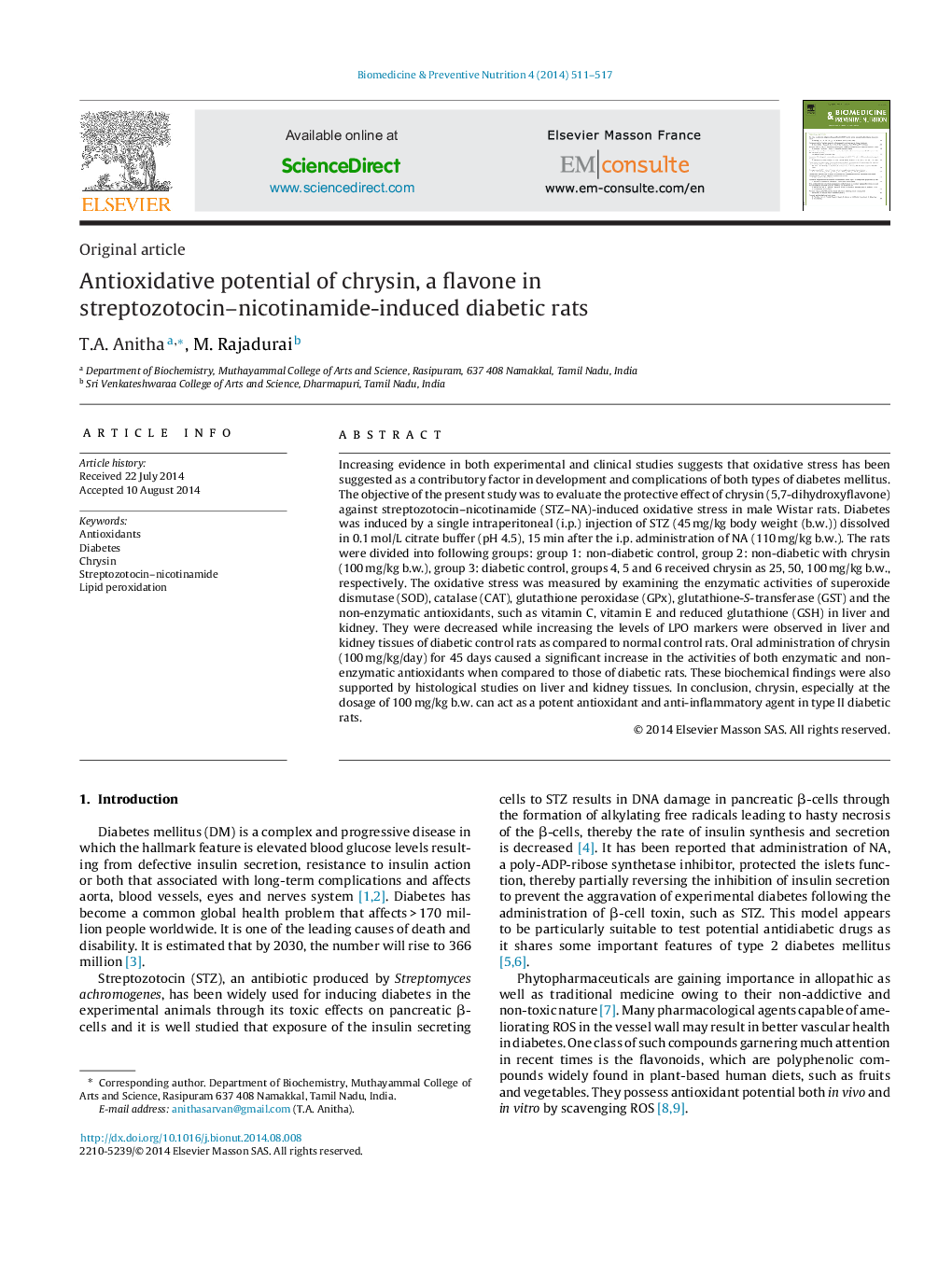| کد مقاله | کد نشریه | سال انتشار | مقاله انگلیسی | نسخه تمام متن |
|---|---|---|---|---|
| 2689072 | 1564702 | 2014 | 7 صفحه PDF | دانلود رایگان |
Increasing evidence in both experimental and clinical studies suggests that oxidative stress has been suggested as a contributory factor in development and complications of both types of diabetes mellitus. The objective of the present study was to evaluate the protective effect of chrysin (5,7-dihydroxyflavone) against streptozotocin–nicotinamide (STZ–NA)-induced oxidative stress in male Wistar rats. Diabetes was induced by a single intraperitoneal (i.p.) injection of STZ (45 mg/kg body weight (b.w.)) dissolved in 0.1 mol/L citrate buffer (pH 4.5), 15 min after the i.p. administration of NA (110 mg/kg b.w.). The rats were divided into following groups: group 1: non-diabetic control, group 2: non-diabetic with chrysin (100 mg/kg b.w.), group 3: diabetic control, groups 4, 5 and 6 received chrysin as 25, 50, 100 mg/kg b.w., respectively. The oxidative stress was measured by examining the enzymatic activities of superoxide dismutase (SOD), catalase (CAT), glutathione peroxidase (GPx), glutathione-S-transferase (GST) and the non-enzymatic antioxidants, such as vitamin C, vitamin E and reduced glutathione (GSH) in liver and kidney. They were decreased while increasing the levels of LPO markers were observed in liver and kidney tissues of diabetic control rats as compared to normal control rats. Oral administration of chrysin (100 mg/kg/day) for 45 days caused a significant increase in the activities of both enzymatic and non-enzymatic antioxidants when compared to those of diabetic rats. These biochemical findings were also supported by histological studies on liver and kidney tissues. In conclusion, chrysin, especially at the dosage of 100 mg/kg b.w. can act as a potent antioxidant and anti-inflammatory agent in type II diabetic rats.
Journal: Biomedicine & Preventive Nutrition - Volume 4, Issue 4, October–December 2014, Pages 511–517
